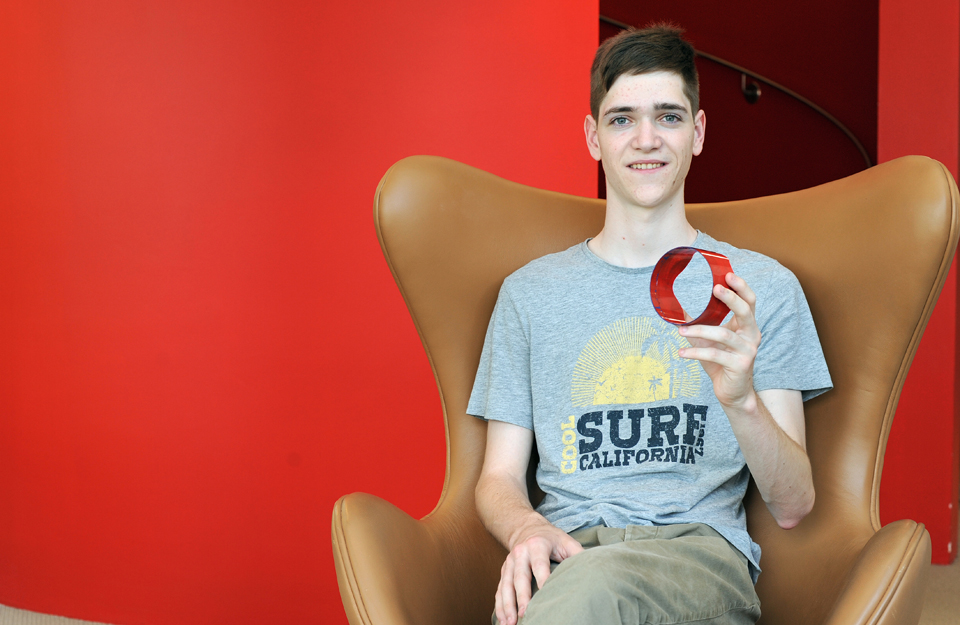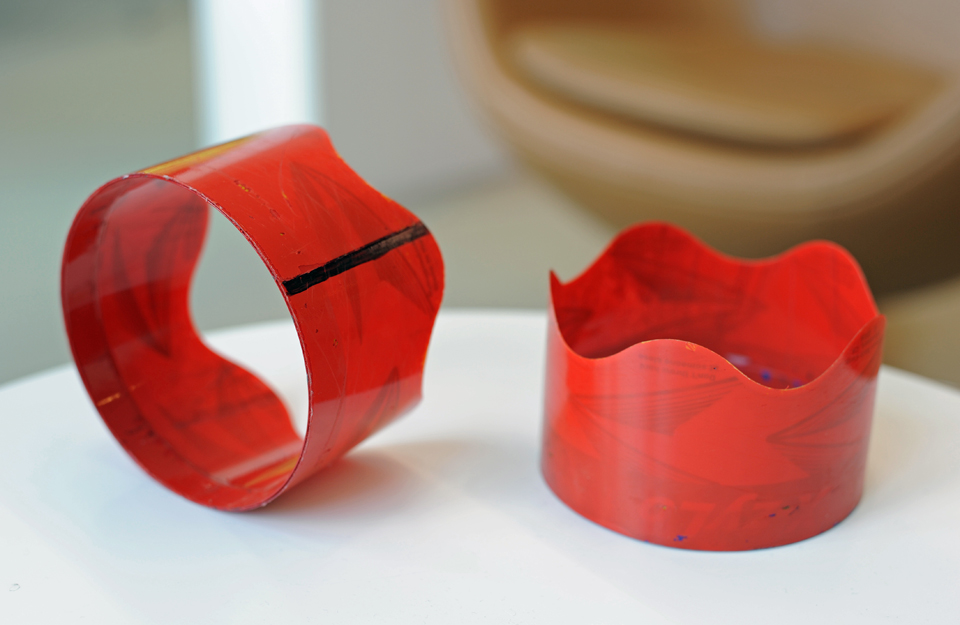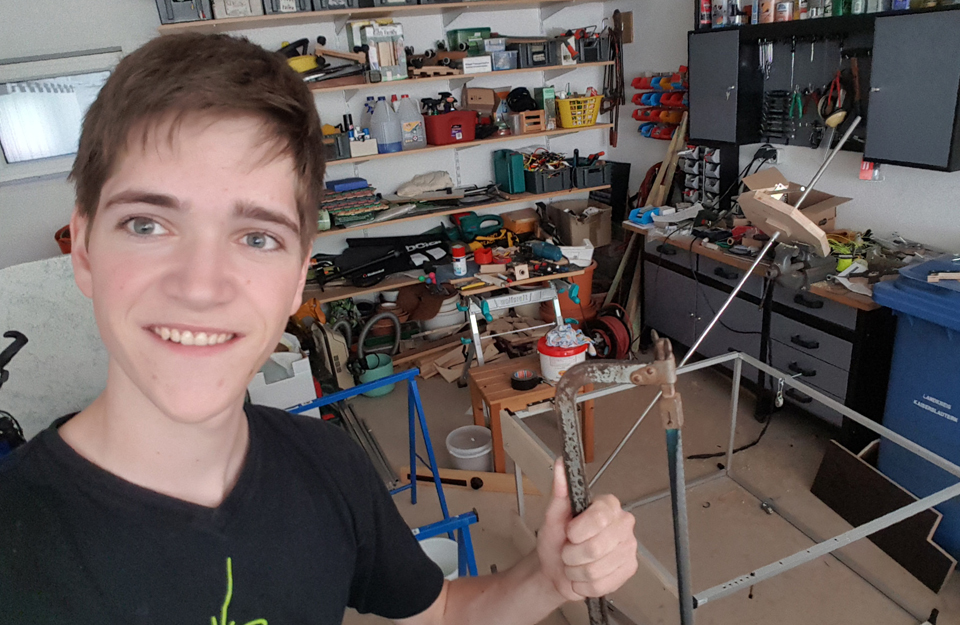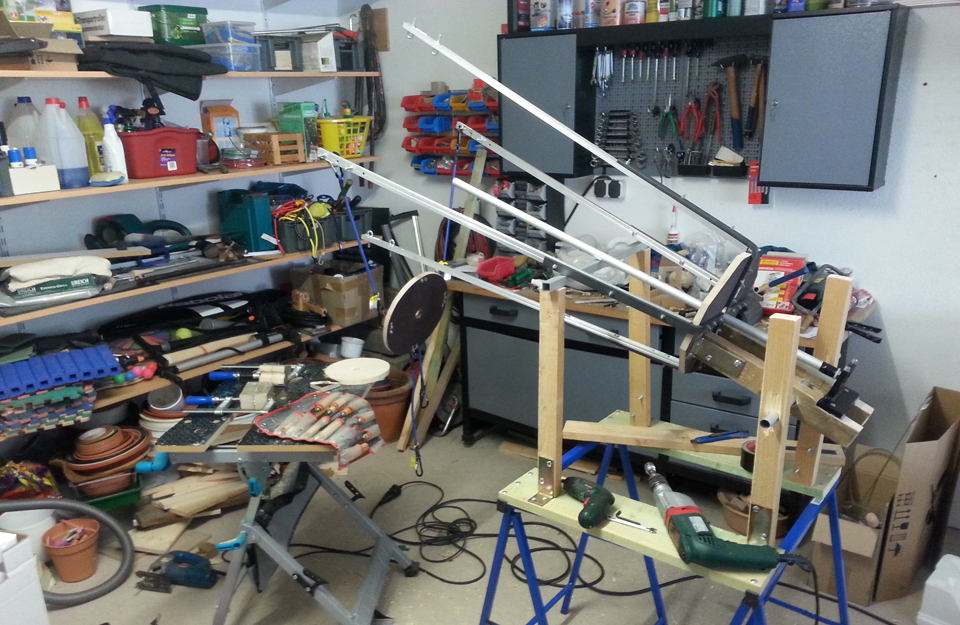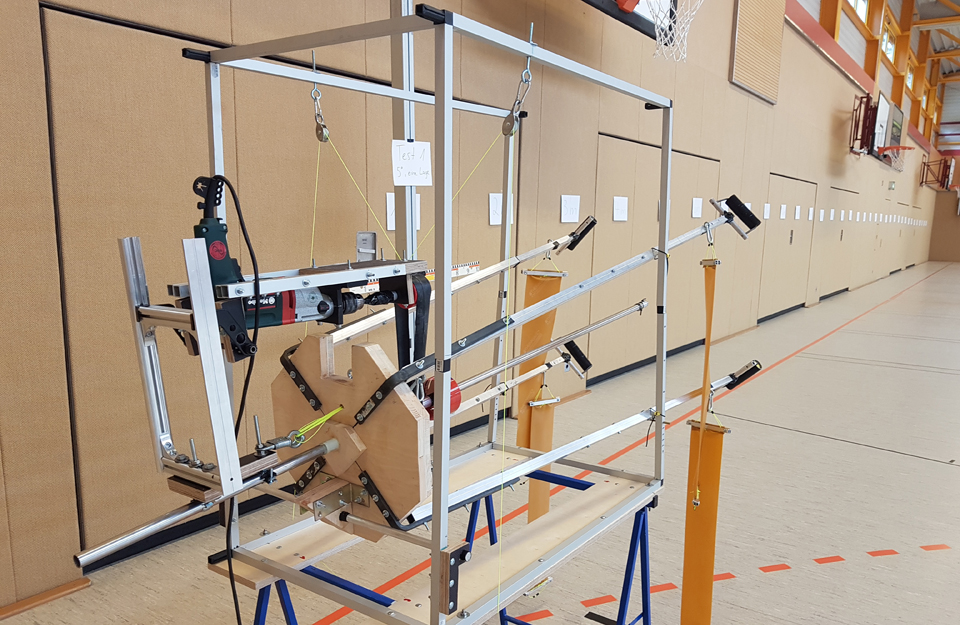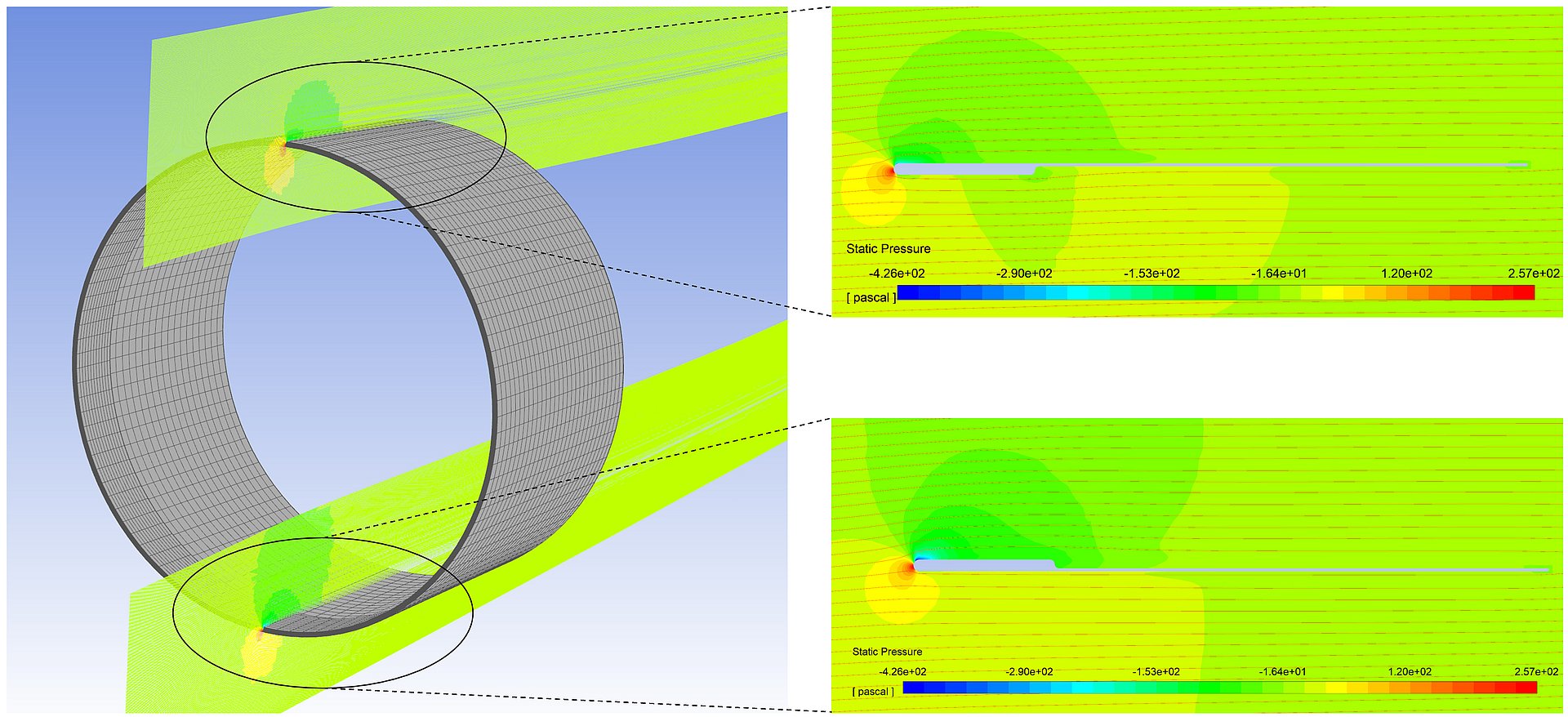Winner of "Jugend forscht"
A catapult for hollow cylinders
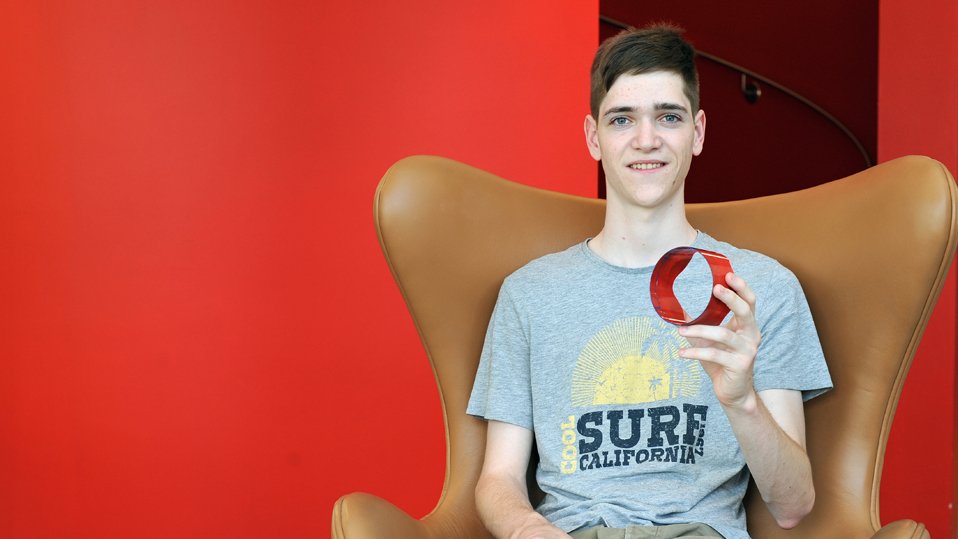
Nils, congratulations on the prize. Were you very surprised to win 1st place?
Nils Wagner: Thank you very much. At "Jugend forscht", there are different stages to go through. The first competition takes place at a regional level, the second at the state level; and the last level is about the best projects of the country. When I took part in the competition at state level, I still had a few problems with my project and wasn't sure whether I would make it. But it worked out, and I was quite confident for the next round.
You conduct research on flying gyroscopes. What exactly does that mean?
Everybody knows Frisbees. They can be thrown to travel a distance of up to 300 meters. An X-Zylo – which is a hollow cylinder – can also fly quite far when being thrown. The current record is a distance of 200 metres. I tried to find out what forces are at work in this case; and I wrote a program that can predict the trajectory with varying parameters.
How did you come up with this idea?
I saw a video on YouTube, by someone who was able to throw such a hollow cylinder relatively far. I was surprised – and it immediately sparked my interested. I was curious about how such a thing could fly so far and what kind of mechanisms are behind it. Then, I decided that I wanted to investigate the process.
How did you proceed?
In my parents' garage, I built a device that functions as a catapult. This throwing device works in such a way that I can influence the speed, rotation, and angle of the hollow cylinder when it is launched. I then carried out tests with the device in the gym of my school. The second part of the project was the theoretical part: I wrote a program that calculates the almost exact trajectory.
You won €2,500 in prize money. What are you going to do with it?
First of all, I will place it with a bank. Knowing myself, I’m sure I will invest the money in a new project at some point.
Are there already any new research projects on the horizon?
No, I have to take care of my studies first. The project took two years, and I didn't study when I started. By now, I’ve spent quite a lot of time for my "Jugend forscht" project, and I have to make up for everything I missed during my studies. But at the same time, I would like to continue working on the hollow cylinder project – in whatever form possible.
(Interview: Sabrina Czechofsky)
Nils Wagner (20), who is originally from Rhineland-Palatinate, is in his 2nd semester of Physics at TUM. He started fiddling around with physical projects while still at school. He had already taken part in "Jugend forscht" once before and came in second in the nationwide competition with his specialist work on aircraft wings with a movable surface. In the near future, Nils wants to explore Munich with his friends – as he didn't have time for that so far. More information: Jugend forscht
